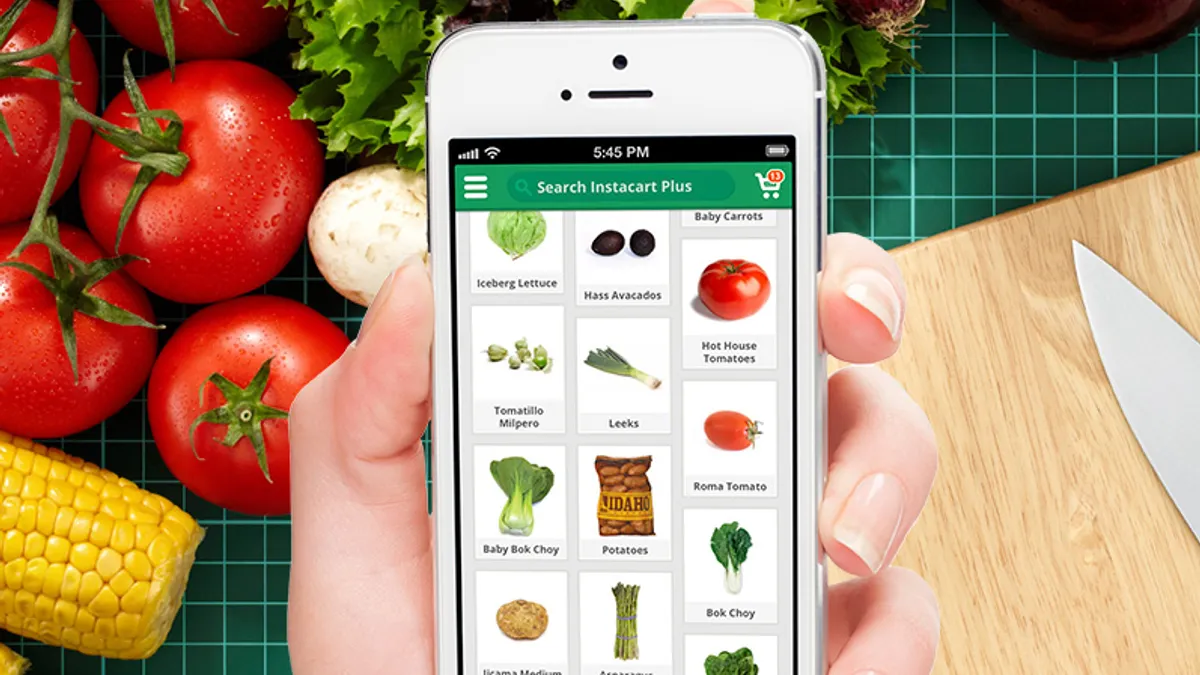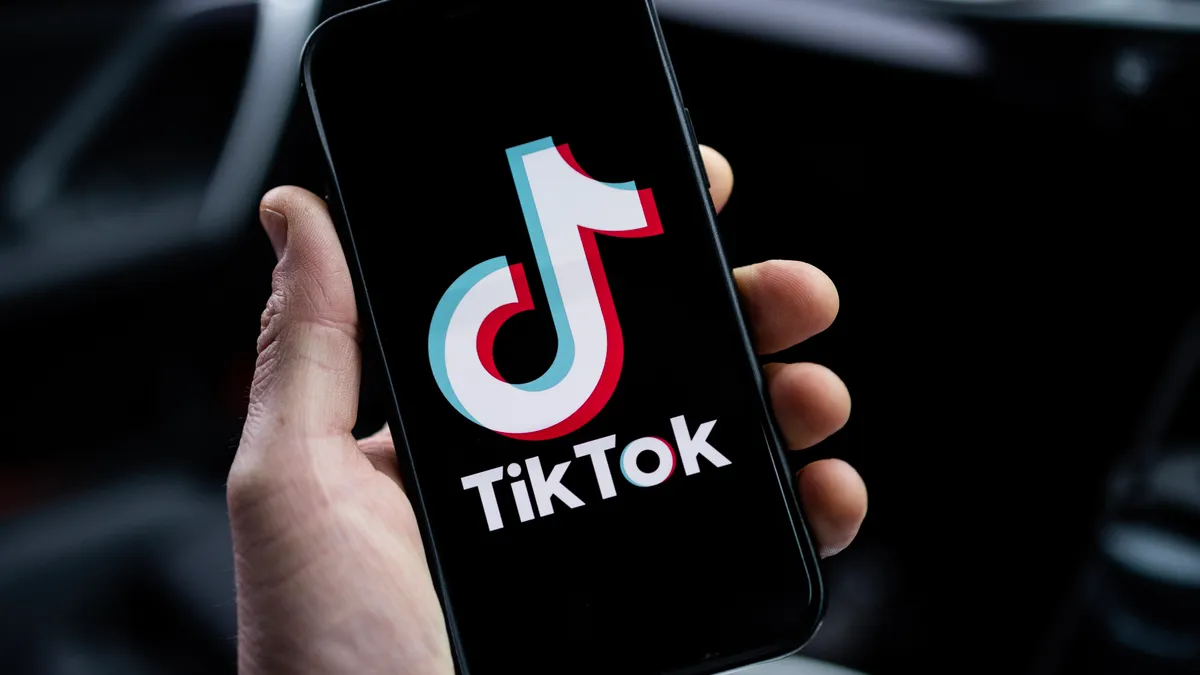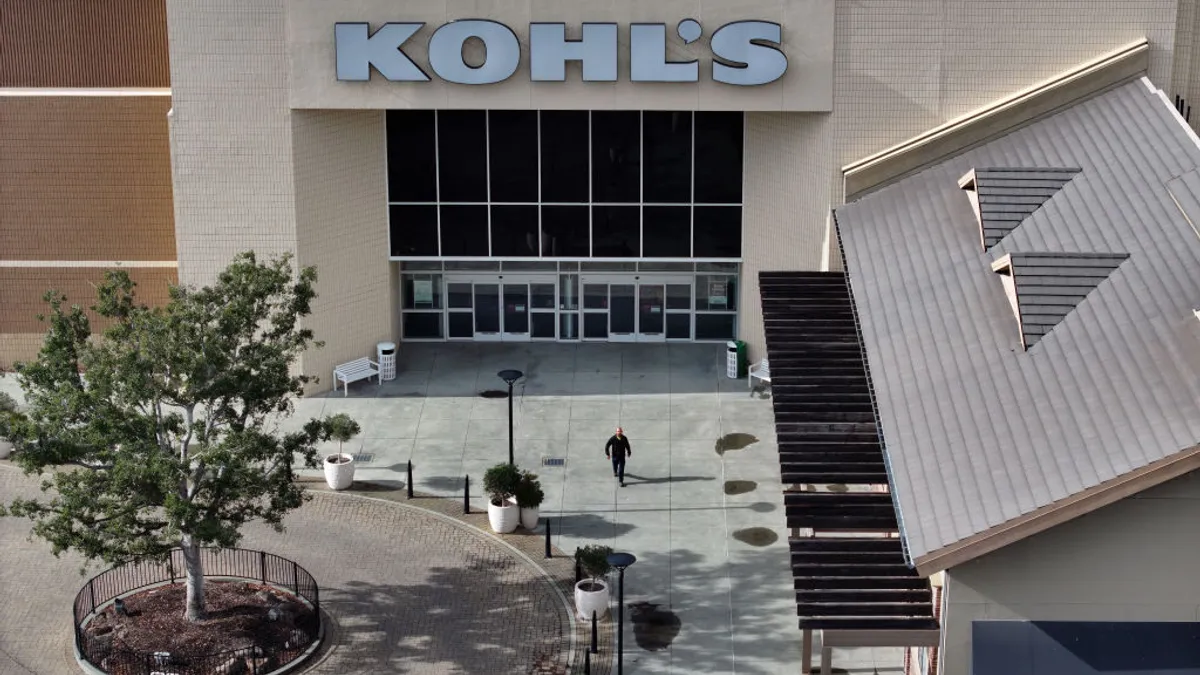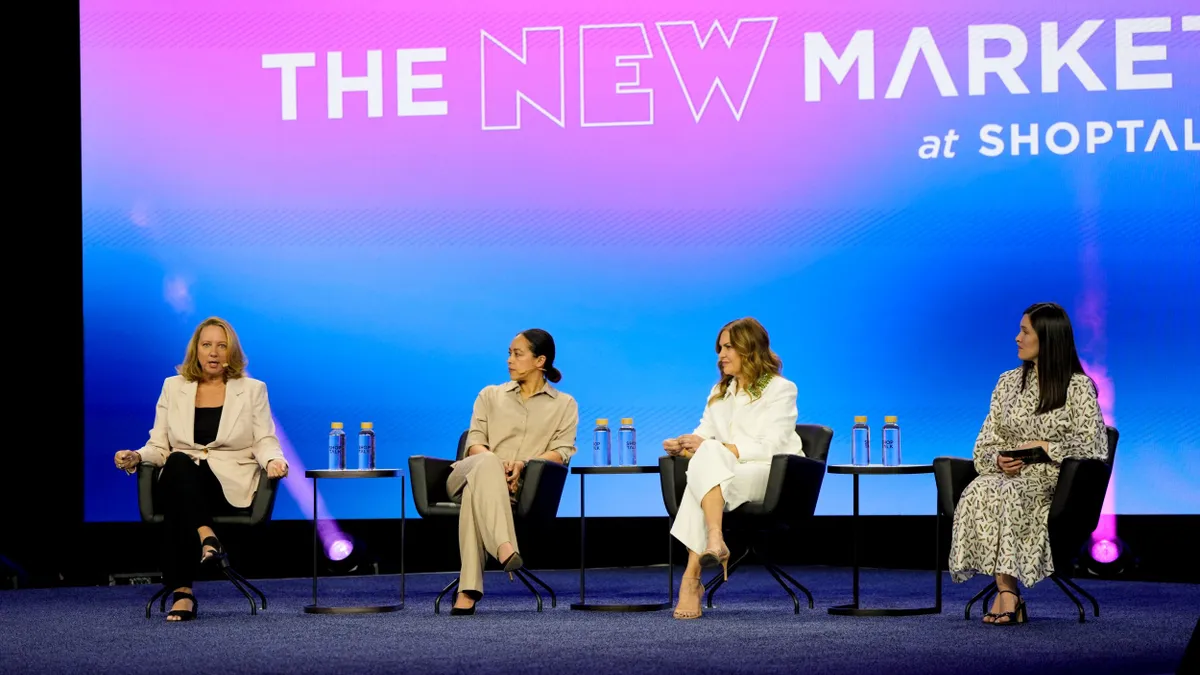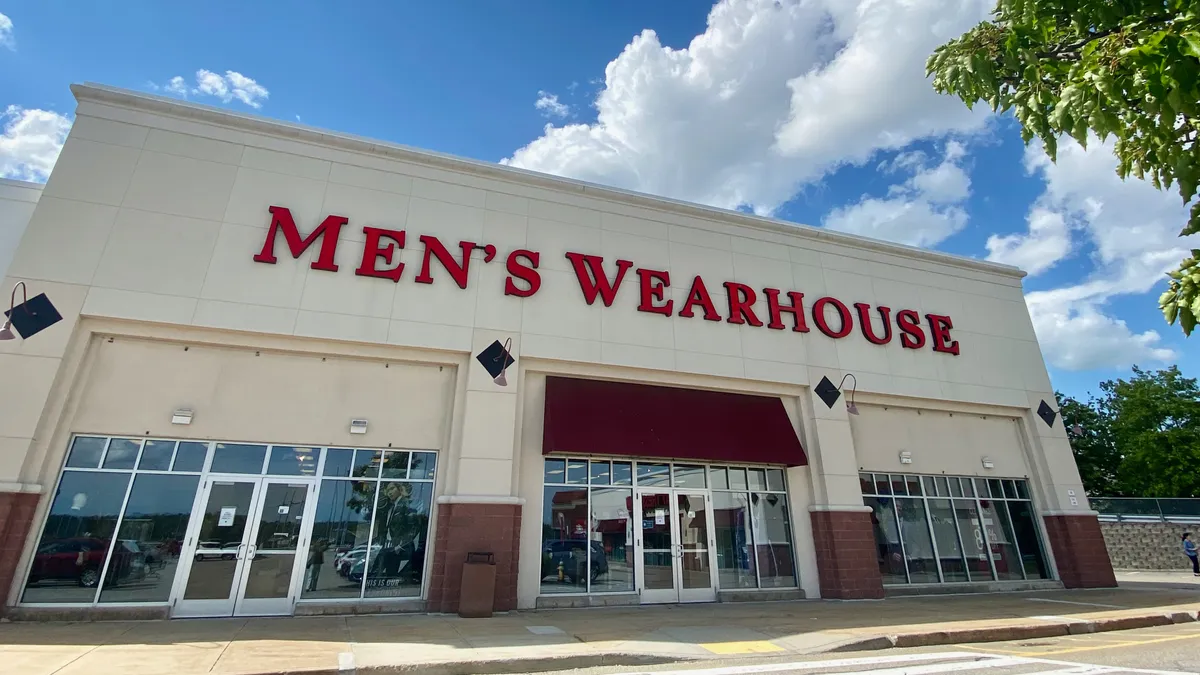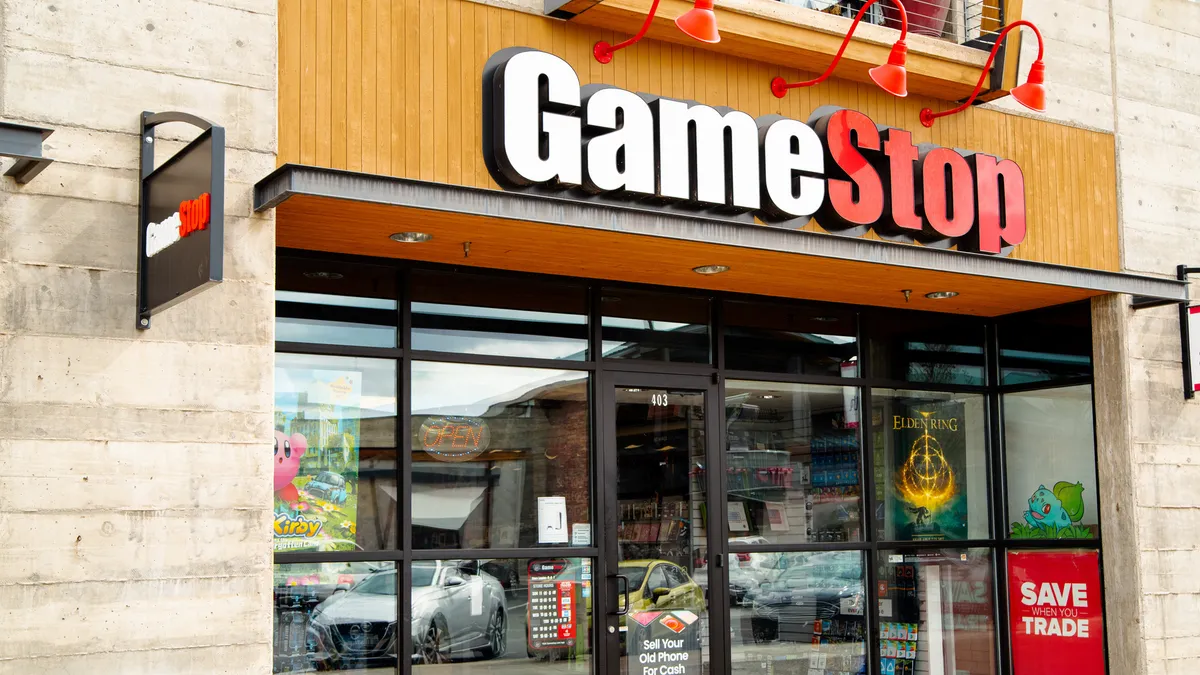The world has been getting more convenience-oriented, with everything becoming more and more available at the consumer's fingertips.
Instacart, one of the nation's leading internet-based grocery delivery services, has helped with the convenience revolution. As Instacart's senior vice president of business development, Nilam Ganenthiran has built partnerships with some of North America’s largest retailers and CPG manufacturers.
A self-described “grocery nerd,” Ganenthiran is responsible for Instacart’s retailer marketplace strategy and has helped the company expand into 30 metropolitan cities across the U.S., establishing relationships with retailers like Whole Foods and Publix.
In February, Ganenthiran spoke with Food Dive about the latest trends in the grocery space.
Food Dive: Instacart’s original function was to match consumers with personal shoppers. How did this all come about?
Ganenthiran: Essentially, when Instacart started as a personal shopping service, we were focused on solving the problem that our founder and CEO [Apoorva Mehta] identified in his own life, where as a busy, urban professional, there weren’t alternatives available for he or his friends to have fresh groceries delivered same day, in one hour, from a brand he knew and trusted. He solved that problem the first year by building technology that connected consumers who wanted their groceries in this way to personal shoppers who could walk into grocery stores and provide this personal shopping service.
Food Dive: That was back in 2012. How did the company start to transition to what it is now?
Ganenthiran: As we saw the dramatic growth. A year into our business, we saw 1.5% of households in San Francisco were using Instacart, and we decided to launch the service in Chicago. In our first three weeks there, we did more deliveries than our first 33 weeks in San Francisco and we realized there was a big demand for this. It was around this time we formally started to approach retailers to see their thoughts on e-commerce because no one was doing it at scale, and that’s where we thought we could help. That’s how our retailer strategy started to develop.
Food Dive: How would you characterize Instacart’s retailer marketplace strategy?
Ganenthiran: As we started speaking to retailers, we realized that historically, every one of them tried to go at it alone with their own e-commerce infrastructure and plan. The challenge with that and why most if not all of those models failed or not gained scale adoption, is the cost. Grocery e-commerce relies on high localized density. You need to keep drivers busy and people picking a lot of items every hour. Groceries, even in the most concentrated markets, are still pretty fragmented. There are many grocers from whom consumers buy their groceries.
Instacart’s strategy is essentially working with a curated set of grocers, within any given city, and allowing those retailers to benefit from the operational scales and efficiencies provided from volume pooling, matching this pool of labor that we can keep busy because there are a variety of grocers on the platform. As well as the ability to get best-in-class technology, without having to build it all themselves, hence the cost goes down for the grocer.
Food Dive: What’s the secret for building strong partnerships with retailers and CPG manufacturers?
Ganenthiran: The commonalities between the two are both retailers and CPGs are still trying to figure out e-commerce and who this consumer is. Increasingly, the who is not some group of young, urban professionals like it was when we started the company, but it’s now every American, although not for every occasion. Both retailers and CPG have struggled a little bit with the change that has been coming. One of the secrets on working with both of them is providing them with rich data and best practices of what we’re seeing elsewhere.
One of the benefits Instacart has is our breadth of scale. It’s 185 grocers, 34 markets and we’ve been doing this four-and-a-half years, so we’ve been able to bring these folks some deep insight into what assortments resonate with the e-commerce customer, what is different about the way they shop on line? What are their frequency and basket patterns? What does the impact have for out of stock and staffing labels?
On the CPG side, brands are struggling to [be] discovered in e-commerce. It is not designed for discovery; it is designed for efficiency and friction-free shopping, so what ends up happening is people get into habits with their e-commerce baskets. Eighty percent of what was in your last basket will end up in your next. People are switching brands, where as in the store environment, you have more of a chance to grab something else from the shelf. We’re trying to help them work through those challenges.
Food Dive: How have you seen technology play a role in grocery?
Ganenthiran: Technology used to only be thought as e-commerce but the biggest trend we’re seeing is technology enabling the in-store experiences. This happens in two ways—ways that are consumer facing and ways that are in the back end of operations.
On the consumer-facing side, if you walk down the grocery aisle, I guarantee somewhere between 10-20% of people have their smartphones out and are doing something while they interact with products. Grocers are just starting to leverage that insight to help consumers make the in-store experience just as friction-free as the online one.
What gets talked about less is the way technology has impacted the grocery supply chain and operation. Grocers have always been on a journey to optimize labor hours in the store or redeploy existing labor hours to higher-valued tasks (meal prep, nutritional consultation, etc.). For the first time, technology is at a point where we can reduce some of the lower value added tasks and transfer those folks and capabilities to things that can focus more on improving the customer experience.
Food Dive: Interesting insight. Can you provide an example of that?
Ganenthiran: If you go to a grocer’s back room today as compared to five years ago, you will see less stuff in the back room, and that’s because there’s better optimization and throughput from backroom to front. You will see less underutilized labor hanging around for work to come. That is all being done through workforce analytics, labor tools and inventory tracking capabilities. This will make the in-store grocery experience for the everyday consumer so much better than it’s ever been before because it’s finally going to be about me getting help on what I should be making for my daughter for dinner and how that meets her overall nutritional plan.
Food Dive: What can brick and mortar stores do to keep people coming back to the stores?
Ganenthiran: The best-in-class brick and mortar operators will do two things. They are going to view technology not as a threat, but as an enabler. And two, they are going to think about what pain points they can take away from a shopper’s day, and that involves taking seconds and minutes out of the shopping experience so there’s truly no friction when you go to a store, and any barrier between a consumer converting and buying gets removed.
Food Dive: What sort of barriers?
Ganenthiran: A barrier might be you walk down the aisle and you can’t find what you’re looking for. Another barrier might be that the checkout lane is too long. This can be solved by using things like the smartphone to help consumers, maybe ordering ahead, helping them find the items, helping them apply digital coupons and improving the time at the checkout line.
Food Dive: What are changes that you believe could impact grocery that aren’t being made or grocers are just slow to adapt?
Ganenthiran: One of the biggest issues in the grocery landscape in terms of adoption is grocery is an extremely low-margin industry and adoption of technology and changing of existing norms requires sometimes testing and investing in the in-store environment. Digital price tags at shelf is something that has been talked about for 20 years and I think every grocer really understands the impact it could have in terms of labor savings, but is less understood is what impact it can have in pricing for the consumer. It’s an innovation that’s simple and that can enable a lot of other innovation at shelf but the industry hasn’t been able to adapt because of the high fixed cost point of changing out tags.
Food Dive: What will grocery look like in 2020?
Ganenthiran: It’s very hard to prognosticate what 2020 will look like other than highlighting what it won’t look like. Things that won’t be different for the consumer, first and foremost, is they are not going to want less value. Consumers also won’t compromise on time. I think the days of waiting seven minutes at the checkout line on a Saturday will be expired by 2020. If you’re a grocer who doesn’t fix that problem for consumers, you won’t be able to attract consumers because no one has that time anymore.


